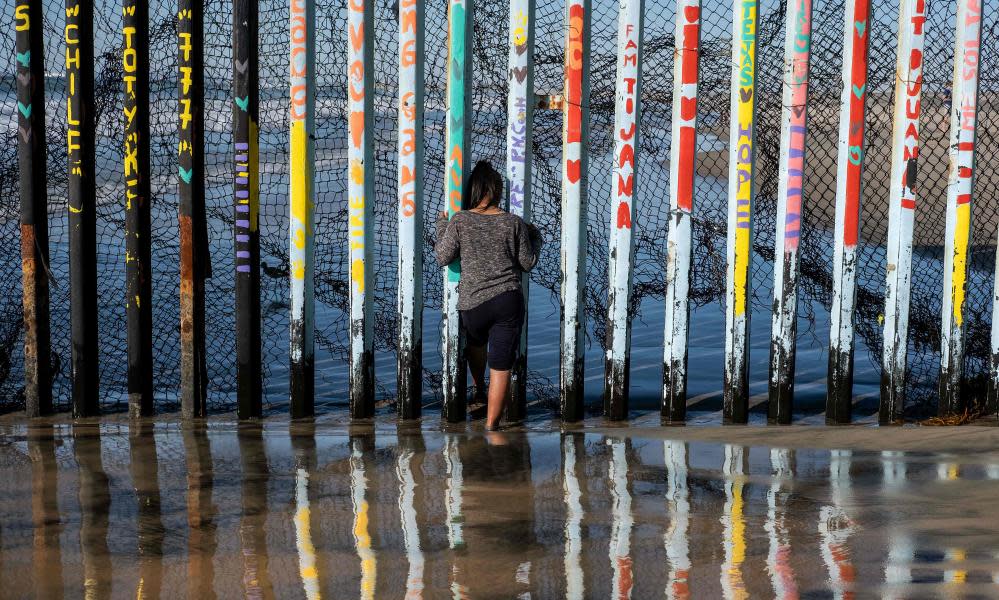Why Trump's 'big, beautiful' border wall will never work

Immigration policy is usually driven by perception much more than it is by reality. And at the heart of these perceptions is the question of how we think about the border. Is it a dark and dangerous place, under siege by aliens who come to spread crime and pestilence? Or is it a place of give-and-take, where our nation must deal with the outside world in a way consonant with our values and showing awareness that absolute sovereignty is a dangerous illusion?
By now, the world knows that Donald Trump thinks of the border primarily as a threat. It is the nation’s weakest point, where it regrettably must have interchange with the dark forces that lie beyond the land of the free. Over it flow criminals, drugs, fictitious “unknown Middle Easterners” (by which he means terrorists) and migrants in general.
His solution is to seal the border as tightly as possible with a “big, beautiful wall” while also cracking down on legal routes of entry into the United States. By defending the nation’s vulnerable underbelly, the wall can restore American sovereignty and greatness.
The vision of an impenetrable wall stretching for thousands of miles appeals to those who mainly see the border as a source of danger and chaos. But the idea that bricks and mortar can solve the litany of challenges that borders bring is a dangerous illusion. Hermetically sealing a nation against the outside world is neither possible or desirable.
An impassable barrier that funnelled all cross-border traffic to legitimate ports of entry would do little to address the real challenges at the border. Foremost among these is the arrival of hundreds of thousands of Central American refugees in recent years. Many travel as family units who voluntarily surrender themselves to US authorities to apply for asylum. Even if a wall could stop them crossing the border, they are still legally entitled to claim asylum at a port of entry. The wall wouldn’t stop them.
Nor would it do anything about what the Trump administration pejoratively calls “catch and release”, the practice whereby refugees are released into the interior of the US while they wait for an asylum hearing. The immigration court system has a backlog of over 800,000 cases and desperately needs more staff and resources to give asylum seekers fair and speedy hearings. The wall won’t help. Meanwhile, the manufactured crisis over wall funding which has shut down the government has forced immigration courts to close as well, exacerbating the backlog.
The fantasy of the wall is a nightmare about the need for separation: that what is on the inside is good and what is on the outside is bad
America’s population of unauthorized residents is dropping and apprehensions at the southern border are at multi-decade lows. Most unauthorized migrants overstay their temporary visas rather than illicitly crossing the southern border. A wall is unlikely to have much impact on the number of people illegally present in the country.
There is also little chance that a border wall would stop the flow of illegal drugs into the US. As the Drug Enforcement Agency acknowledges, the vast majority of illegal drugs that enter the country do so through legal ports of entry, hidden among legitimate traffic. Short of shutting or slowing down legitimate trade with Mexico, worth hundreds of billions of dollars a year, little can be done to stop this inflow – certainly not erecting a wall far away from where the drugs actually enter.
What about the terrorists who imperil America’s security by sneaking in through Mexico? The wall won’t help with that problem either, because it’s a problem that doesn’t exist outside of the fevered imaginings of administration officials and conservative talking heads. There is no known case of a terrorist having crossed the southern border. The main terrorist threat facing the US today comes from home grown extremists. A border wall won’t do anything to help with that, either.
Regardless – perhaps because – of its lack of any practical worth, Trump supporters value the wall as a symbol of American sovereignty and strength. Rightwing commentators such as Ann Coulter and Tucker Carlson are fond of invoking Israel’s border wall as an example of what they want for America: proud ramparts of freedom standing against the chaos and terror without.
But an erroneous way of viewing the border is embedded in this way of thinking. It is a mistake to view the border purely as a source of threat, rather than the place where the US can become stronger through its interaction with the outside world. Honoring its legal and moral obligations to refugees allows the US to demonstrate its commitment to its highest ideals to the world. Cross-border trade strengthens the American economy and regional peace. A liberal visa system enriches America economically and culturally.
At root, the fantasy of the wall is a nightmare about the need for separation: that what is on the inside is good and what is on the outside is bad. But America’s highest ideals have always been about creating a mixture of the inside and the outside which is greater than the sum of its parts. Keeping that tradition alive means keeping alive a way of viewing the border that sees it as representing much more of an opportunity than it does a threat. It means, first and foremost, tearing down the idea behind this wall.

 Yahoo News
Yahoo News 
